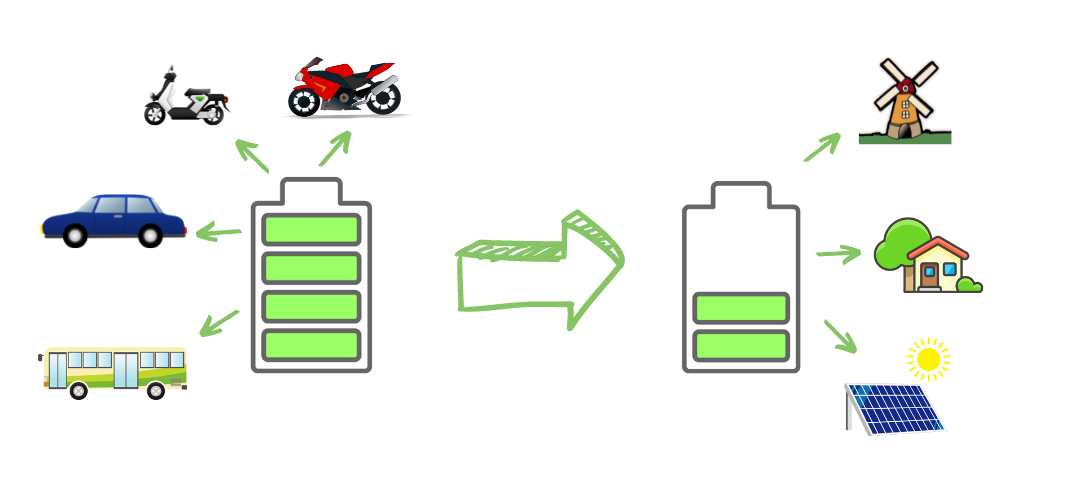Is EV battery repurposing the future of second life batteries (2LB)
As the world’s reliance on lithium battery technology grows, supplies of essential production materials are not expected to keep up with demand. Repurposed electric vehicle Li-ion electric car batteries provide a feasible option for reducing the quantity of retired lithium-ion batteries that wind up in landfills and extending their useful life while end-of-life alternatives, such as recycling, are developed and established. Policies ban the mass dumping of EV batteries, as this practice causes major environmental hazards. The repurposing and recycling of electric vehicle batteries are the major alternatives remaining.
Product repurposing is described as “using or utilizing a product or its components for a purpose which it was not originally designed for.” In electric vehicles, we see that the batteries are built to last 8-10 years, meaning that they are considered usable in electric vehicles by the regulatory standards set. After which, if they are disposed of or, in the best case, sent to be recycled, we would end up wasting a huge chunk of energy that is still left in these batteries. Here, repurposing ensures that the batteries are used to their fullest potential.
Batteries being reused have multiple applications today. A major benefit to repurposing is the increase in the availability of power for household and industrial consumption. Since we see that the “second life” for EV batteries comes from providing commercial and industrial backup for consumers and the grid, the need to produce energy by utilizing non-renewable sources of energy for the grid will certainly be reduced.
- Grid operators and energy suppliers: Battery Energy storage is an excellent approach to address renewable energy’s system stability challenges. The battery can be used as a backup power source for the grid by Distribution System Operators (DSOs) and energy suppliers. When there is a surplus of energy, it is stored in the battery and then sent to the users when demand is high. The addition of grid backup power can help consumers avoid power disruptions during critical grid outages until system stability is restored. The backup storage space might be limitless, given the access to old EV batteries which are certainly on the rise with the rise in EV sales.
- Distributed energy resources at home: Energy users may store energy from the grid and their rooftop solar panels using old and repurposed EV batteries. Adopting used/recycled EV batteries is a possible choice for individuals who cannot afford new energy storage systems for their homes on a financial level.
Even though the applications might seem endless, there is a major barrier that repurposed batteries fail to address, that is, the cost. New battery prices have dropped by an order of magnitude as performance has improved, effectively pricing old batteries out of several applications. Current battery packs’ integrated construction and design, as well as proprietary management software, limit component replacement and raise the expense of testing and repurposing. This brings the cost of repurposing a used battery to four times that of manufacturing a new battery.
With all its cons, we see that repurposing is the way to go considering the impact it has on the environment. If you take into account the circular economy, which is what the EV industry strives to create, we see that repurposing is a huge part of it because it ensures efficient use of batteries before they are recycled. Efficient repurposing methods are necessary for a sustainable and eco-friendly EV eco system, just like how an intelligent battery management system is necessary for the efficient working of the battery.
Thumbnail image credit: google.com and pinclipart.com

